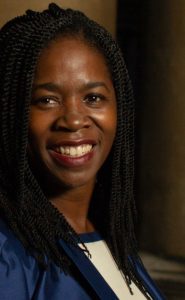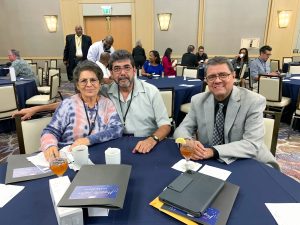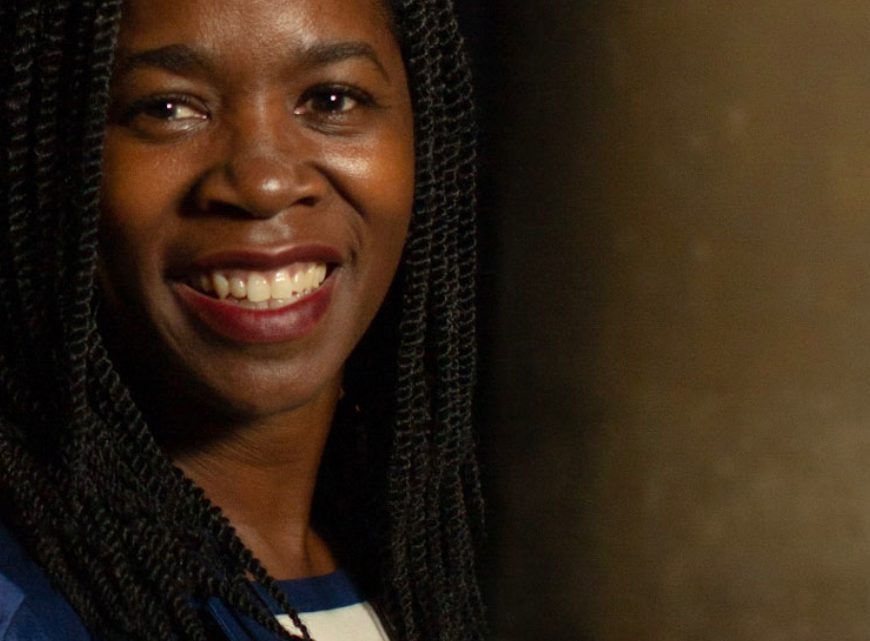Introduction

The 7th Convention of the Conscience and Justice Council took place in Glendale, California, on Sept. 22-25, 2022. As it is not often there is a convention focusing solely on the issue of social justice—if at all—I was intrigued to find out what the convention was all about, and what I would gain from attending. This article can only give a brief snapshot of the four-day convention, so by necessity I will leave some presentations out. However, before I go on to give an overview of the convention, it would be useful to start by explaining what the Conscience and Justice Council is.
Background
The CJC is a network that was established in the North American Division in 2016. The inspiration to set up the council was birthed when Public Affairs and Religious Liberty directors from various conferences across the NAD gathered at Oakwood University and observed that the focus of their ministries was too narrow and limited. They recognised that though public affairs were an essential part of their ministry, it was often absent from their remit.
Public affairs involve an outward looking approach to building and maintaining relationships with key stakeholders, such as political and governmental agencies and businesses, as well as local communities. Yet the focus of PARL ministries had been limited to observing religious liberty as it relates to legal instruments, and most specifically the right to observe Sabbaths. Consequently, the ministry had been denuded of any evangelistic or missional impact. Thus, the vision to address this shortcoming was created: to set up a network so that PARL ministry could be a valuable and powerful asset to the Adventist Church. In the short time since CJC was established, they have developed numerous initiatives to revitalise public affairs and religious liberty, including:
- developing and publishing resources on social justice
- producing Sabbath school lessons on social justice
- organising community projects
- raising awareness of PARL issues
- organising voter drives to encourage community members to vote
- organising annual conventions on social justice
The convention is an important part of the CJC’s strategy to develop its public affairs by enabling church members and allies to come together to deepen their theological understanding of social justice, and to gain practical insights into ways they can be better advocates as a church and as individuals. Consequently, the rest of this article will focus on the convention and what was gained from attending.
Prophetic Justice

The theme of the convention centered on prophetic justice. As Adventists we have often seen ourselves as the third Elijah with a prophetic mission. So, understanding what prophetic justice is seems very apt. Indeed, the first question we were asked to consider was What does it mean to have prophetic justice? This question was posed by Yvonne Figueroa, executive director of LA Voice, before introducing us to an empowerment model to create prophetic action. The model involved first listening to community stories, then reimagining the future to create needed change. This then enabled the organisation to take prophetic action. The final step involved reflecting on the impact of the action before beginning the cycle again. This was pertinent, as often we don’t listen to the community before we come up with strategies to help our local communities. Or instead, we carry out surveys and wonder why the needs indicated on the survey do not correspond with actual take up.
Instead, to have any real impact, we need to hear those community stories that express felt needs to know how to respond. To accomplish that, we need to develop relationships with the community. For example, we might tell the community that they need Jesus, or dietary change, yet the most urgent and challenging situation the community is experiencing is violence, and their desperate need to be safe. Or perhaps they need mentors for their children.
However, we never get to this level of understanding until we listen to their stories. It is only at this point, that the Holy Spirit can inspire us with the needed answers. This was a powerful talk!
‘The Model Minority’
Afterward, Nancy Yap, executive director of Center for Asian American United for Self-Empowerment spoke about the unrealistic expectations that were placed on Asian Americans. They are seen as a ‘model minority’, but this often works against them. In reality, Asian Americans are an extremely diverse group with diverse needs, which are often minimised and overlooked due to this monolithic stereotype of being the model minority and not needing any support.
That was something I had not considered before, and though I was aware that the academic and career outcomes vary widely for young people from the various Asian communities in Britain, I hadn’t given much thought to how this stereotyping played itself out negatively in the lives of Asian minorities. This was definitely food for thought.
Environmental Justice
After these presentations, there were a variety of workshops offered. I chose to go to the workshop on environmental justice. This was such a powerful workshop by Gregory Hoenes, director from the West Region, Southern California conference. I learnt how environmental exploitation and ruin were closely linked to racial injustice. And that increasingly those involved in environmental justice are realising that to heal the Earth, Black and Brown peoples need to be liberated.
That is, racial injustice needs to end if we are to save the planet, and therefore justice is in everyone’s interests. Often, it is Black and Brown people who are the ones bearing the brunt of the environmental crisis. It was also disturbing to hear how in the States, Black and Black communities had been deliberately targeted, having toxic waste dumped near their homes, damaging the health of people in those communities.
Gregory described it this way: “The White and wealthy do not care how polluted water affects black and poor people.” This was a reference to the Flint Water Crisis,* and the unconscionable wrongdoing that took place there. He also gave a sombre reminder that the Adventist Church developed in such a nation where settler colonialism resulted in the mass genocide of the indigenous people, and mass slavery of African Americans and that much of that culture is still present within the church, hampering our mission.
The Adventist Prophetic Role
The second workshop I attended was by Zack Plantak, professor at Loma Linda University School of Religion, who spoke on the Adventist prophetic role. This workshop spoke powerfully to the need for the church to be realigned with our unique mission as the Advent movement. To do so we need to understand more fully what it means to be part of a prophetic movement.
Zack cogently spoke to the fact that true prophets are deeply concerned with justice. Therefore, for the church to truly embrace its prophetic mantle and to inhabit its calling to be the third Elijah, the church also needs to be deeply concerned about justice issues and be prepared to speak truth to power, just as Elijah and John the Baptist did in their era. They were both unafraid to confront the abuse of power they witnessed in their time.
How much does the church truly live up to this role? Unfortunately, we have often fallen short. However, by deepening our awareness of our past, we increase our ability to reimagine our future and create prophetic change.
Worrying Trends in Global Politics
On Sabbath, Bettina Krause, editor of Liberty magazine, alerted us to the worrying tendency across the globe of national leaders using religion to justify the persecution of other religious and/or ethnic groups, coupled with the refusal or resistance to assist those who have been persecuted. Though the world had previously said ‘Never again!’ in the aftermath of the Holocaust, it seems that we are walking a perilous path back in that direction.
This was followed by the worship service where Pastor Lola Johnston gave a potent sermon, demanding that we see what is often in plain view. She asked the pertinent question, “What do you see?” For often, the need is right before us, but somehow, we are looking in another direction. This rousing sermon was a call to action.
Prophetic Action in Addressing the Problem of Homelessness
After lunch we made our way over to central Los Angeles to explore the community. We visited Bridge Housing, which had a radical, fresh approach to tackling the problem of homelessness. LA has a profound homelessness problem exacerbated by the fact that the city is a magnet to those seeking a fresh start and those avoiding harsh winter conditions. It is difficult to survive homelessness in cities like New York, for example. As a result, the council decided that they needed to do something radically different to respond to the problem. They decided to convert a dog park into a housing project. This decision overcame the problem of trying to procure land for the build, which would have been extremely costly and time consuming to purchase.
This project consists of a huge building, split into male and female dormitories, housing approximately 100 residents. Each person has a space the size of a double bed, roughly 6ft by 4ft, with 5ft high walls separating each space to give a degree of privacy. The entrance to the little cubicle was covered by a blanket, and inside was a single bed, and a small cupboard. The most important aspect of the project is the dedicated workers who are there to ensure safety and security, and to work with each client to get them back into employment and permanently rehoused. This also includes remedial help for those struggling with their mental and emotional health.
It was sad to hear that there were even residents in the centre who were holding down jobs, but still couldn’t afford accommodation. However, it was encouraging to hear that the project is already making a difference, enabling clients to come off the street permanently. This was an inspiring visit and an example of prophetic action, for change had been created in a situation that was thought to be hopeless.
Empowering Black Women
The last day of the convention came quickly. In the morning we had the learning labs, which were practical sessions on various topics. I chose to attend the workshop on women’s empowerment led by Pastor Lola Johnston, PhD. There I learnt that medical science is now recognising that the higher rates of mortality suffered by African American women are not simply due to diet or lack of exercise, but have more to do with the emotional trauma caused by living in a racist and sexist society. In addition, the myth of a strong Black woman is just that—a myth.
However, there are ways that Black women can protect themselves:
- acknowledging that they are only human, so they don’t fall prey to the stereotype of the strong Black woman who does not need any support
- not overloading themselves with other people’s burdens whilst ignoring their own
- understanding the impact of intersectionality in their lives (having to cope with racism and sexism simultaneously does take a toll)
A Black woman can minimise the impact by understanding the micro aggressions that she encounters in her daily life and having a language in which to describe her experience, enabling her to use that knowledge to find support and community. This workshop brought the convention to a satisfying close.
Final Impressions
The conclusion I came to in attending the convention was that I was so glad I decided to satisfy my curiosity and attend the event. It was refreshingly different, thought provoking and inspiring. I liked how there were a variety of topics, which were delivered in different ways, including a site visit.
I gained so much insight and knowledge in attending the convention and thoroughly enjoyed the opportunity to network with other like-minded people. I do plan to return to the convention next year, which will take place in Washington, DC.
*The Flint Water Crisis,is the scandal of how the drinking water of the city of Flint, Michigan, was contaminated with lead and possibly legionella bacteria. This occurred in 2014 during a budget crisis. Flint changed its water source from the treated and therefore safe drinking water from Detroit Water and Sewage Department to the Flint River. This exposed over 100,000 residents to unpotable water that was not fit for drinking. This meant that between 6,000 to 12,000 children were drinking water with unacceptably high levels of lead, leading to long-term health consequences including dementia and other cognitive difficulties. A number of residents died of Legionella disease.
Pastor Dee Edwards came from the South England Conference in England to attend this year’s convention.










